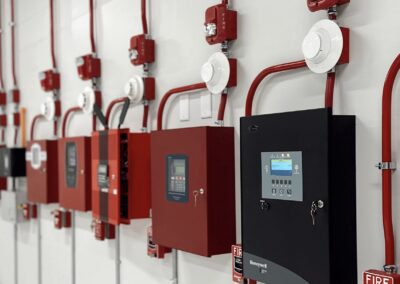Alarm systems have come a long way over time, and they have quite a history here in the US.
Did you know the fire alarm dates back to 1658, where New York’s finest deployed men to walk around the streets looking for fires, with buckets on ladders and ringing bells to warn the community? In the 1800s, fire alarms became a little more advanced with the placement of bell towers around cities to warn off people of a fire.
The fire alarm progressed yet again, in 1852, where it reached a new level of technology. Using the telegraph system, two alarm boxes with a telegraphic key were used to report neighborhood fires. One man would crank the handle that was attached to the box, releasing the key to send out a message to the central alarm station. The telegrapher at the central station would then send out the address of the location to the fire department.
By the late 1800s, the electric fire alarm system was invented. This was the first time a thermostat could detect heat and trigger the sprinkler system to displace a fire. This was also the birth of fire protection services. As the protection services grew, so did the technology of the fire alarm system.
So what about the fire alarm system today? What new and innovative ways are fire alarm systems protecting people and buildings?
Today, the newest development of the fire alarm system has been the addressable head. Before the addressable head, there was an alphanumeric display at the control panel that indicated what zone was being affected. With the addressable head, the location can be pinpointed directly. Plus, it has enhanced diagnostic capabilities as its advantage. If the system goes down, time is key to restoring fire protection to the building, so the addressable head system is quicker and more accurate.
Many buildings have upgraded to the addressable heads, and which does not necessarily require a complete system replacement. All that has to be done is to pull the old heads, place some extra wire, and insert new circuit cards into the current control panel. Each new head possesses an address, which sends its exact location (DIP switches). That means a binary number is entered that contains the address prior to installation.
As you can see, the fire alarm system has come a long way and had a remarkable story throughout history. We value the history of fire protection, and we continue to gain knowledge about these systems to educate and protect others from fire. We are pretty happy that we don’t have to depend on a few guys with buckets or a bell tower to warn us about fires. We are excited to pave the way in fire protection, giving you a better, safer option.

